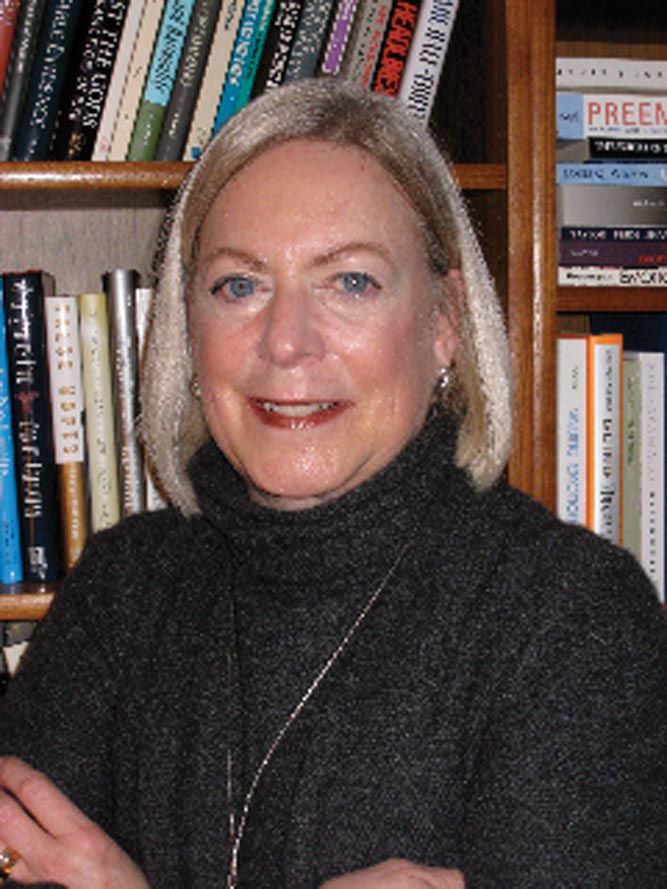Required Reading: Marcia Day Childress

What book have you read the most times?
A college roommate gave me Virginia Woolf’s To the Lighthouse in 1970, and I’ve read this hauntingly beautiful novel every year since. It led me to Woolf’s other autobiographical writings, especially memoirs unpublished during her lifetime, which became the basis of my doctoral dissertation. I remain fascinated by To the Lighthouse’s highly rhythmic language—how it works for the reader, but also how it may have worked for Woolf as she re-created her childhood, revisited traumatic losses and explored her art’s healing potential.
What neglected or lost classic would you recommend?
The Outermost House, penned 80 years ago by Henry Beston, chronicles a year lived on Cape Cod’s dunes. In 1926, Beston built a two-room house where the Cape juts farthest into the Atlantic. There he stayed through a full year, observing tides and turns of season, marveling at bird migrations, weathering storms, musing on his own insignificance. The Outermost House is a tonic for anyone who dreams of a beach stay in the long-ago wild landscape and elemental life of a barrier island.
What are you reading now?
Because I study literature that charts the geography of illness, explores the end of life, or reflects on doctoring, my booklist may seem unusually dark. Be that as it may, here’s what I’m reading. Say You Are One of Them is a volume of stories about children’s lives in AIDS-devastated Africa by Uwem Akpan, a Jesuit priest who teaches in Zimbabwe. The Two Kinds of Decay is poet Sarah Manguso’s spare, crystalline memoir of a rare neurological disorder. And Writing on Stone: Scenes from a Maine Island Life is Christina Marsden Gillis’ meditation on time and loss anchored in 40 summers on rustic Gotts Island and by her son’s granite marker in the island cemetery.
You teach an undergraduate course called Literature and Medicine: Narratives of Illness and Doctoring. Is there a book that’s a mainstay on your syllabus?
Anne Fadiman’s The Spirit Catches You and You Fall Down is a centerpiece in both the undergraduate course and my literature and medicine course for fourth-year medical students, assigned as we transition from doctors’ stories to patients’ illness narratives. This is the true tale of a Hmong child and her family, refugees who settled in California after the Vietnam War, and the collision of their Hmong cosmos with American biomedicine that occurs when the infant Lia develops seizures (the title literally translates the Hmong term for epilepsy). In demonstrating that American medicine, like the Hmong, has a distinct, exotic culture, The Spirit Catches You explores how culture affects the experience, expression and understanding of illness (and healing) and asks whether cultural chasms can ever truly be bridged.
Is there a particular book that you can say changed your life?
Everything I read changes me, but I value certain books for the way they mark life transitions. One is A Child’s Christmas in Wales, Dylan Thomas’ mythic remembering of childhood. On Christmas 1972, a boyfriend gave me a pocket-size edition of Thomas’ tale illustrated with simple woodcuts. The boyfriend left soon after, but the book stayed. The light-blue paper cover now faded, the pages worn, it’s read every Christmas. For 30 years, the little blue book has been my gift of choice to friends and their children. But things came full circle last Christmas, when my grown son, whose own holiday memories ring with Thomas’ cadences, surprised me with a “new” Child’s Christmas in Wales—a 1954 hardcover first edition.
Where is your favorite place to read?
Anywhere I can hear the sea.